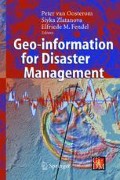Abstract
The recent upgrading of laser scanning devices has led to a set of new surveying techniques for civil engineering and environmental analysis.
The terrestrial laser scanner allows complete and dense 3D digital models of the surface of any object to be reconstructed. This is very useful for natural hazards and risk assessment where morphological investigation is a starting point to evaluate stability properties. In the case of disaster management, a 3D model is useful to acquire and monitor emergency situations. Field acquisitions, with laser scanner devices are, in addition, very fast and they are made in safe conditions.
However, particular attention must be paid during the acquisition, processing and modeling phases.
-
LIDAR data often include elevated noise (usually gross errors and outliers) that has to be removed with opportune techniques before starting the 3D registration and modeling.
-
In addition, 3D contexts usually have very complex shapes that cannot be recorded with sufficient resolution with a single scan. For this reason, two or more scans must be taken from different points of view of the same object, in order to eliminate shaded areas.
-
To obtain the final 3D model of the object it is therefore necessary to align and geo-reference the single scans using suitable registration techniques.
-
The integration of DDSM geometric data (e.g. the point cloud acquired by using the laser scanner) with image radiometric data allows a new concept of the Solid Image to be obtained.
-
Solid images can be used in many surveying applications to determine, in real time, the position of any point in a 3D reference system, using a normal PC or to carry out correct three-dimensional measurements (lines, areas, volumes, angles, etc.), by just selecting some points on the image.
-
In addition, with the Solid Image, even unskilled users can easily plot profiles, sections and plans using simple drawing functions, and can generate stereo models and realistic 3D models.
An application example of these new surveying techniques in disaster management is shown.
Access this chapter
Tax calculation will be finalised at checkout
Purchases are for personal use only
Preview
Unable to display preview. Download preview PDF.
References
Biasion A, Bornaz L, Rinaudo F (2004) Monitoraggio di eventi franosi in roccia con tecniche laser-scanner, Atti convegno nazionale SIFET, Chia Laguna (CA) 22–24/09/2004
Bornaz L, Dequal S (2003) The solid image: A new concept and its applications-ISPRS Commission V, WGV/4 — Ancona, 01–03, 2003
Author information
Authors and Affiliations
Editor information
Editors and Affiliations
Rights and permissions
Copyright information
© 2005 Springer-Verlag Berlin Heidelberg
About this chapter
Cite this chapter
Biasion, A., Bornaz, L., Rinaudo, F. (2005). Laser Scanning Applications on Disaster Management. In: van Oosterom, P., Zlatanova, S., Fendel, E.M. (eds) Geo-information for Disaster Management. Springer, Berlin, Heidelberg. https://doi.org/10.1007/3-540-27468-5_2
Download citation
DOI: https://doi.org/10.1007/3-540-27468-5_2
Publisher Name: Springer, Berlin, Heidelberg
Print ISBN: 978-3-540-24988-7
Online ISBN: 978-3-540-27468-1
eBook Packages: Earth and Environmental ScienceEarth and Environmental Science (R0)

